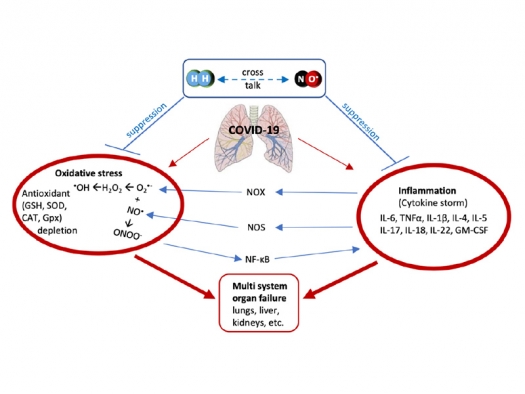Hypothesis and preliminary data, increased blood flow, and wound healing
H2-and-NO-work-together.jpg

J Transl Sci, 2020
H2 and NO• work together to suppress COVID-19-induced oxidative stress and inflammation, which helps to prevent multiple organ failure and death.
COVID-19 is caused by a viral infection, and can be a lethal disease to the immunocompromised.
HydroShot is a popular functional health beverage that is infused with molecular hydrogen, and contains the nitric-oxide-producing amino acid citrulline.
Numerous pre-clinical and clinical studies have demonstrated that the gaseous-signaling molecules, molecular hydrogen and nitric oxide, have anti-oxidant, anti-inflammatory, and immuno-modulating benefits. Although nitric oxide can directly kill pathogens, it is critical for immune function, can inhibit viral replication, and can also induce lethal cellular injury under stressed conditions.
In contrast, molecular hydrogen has a very high safety profile and helps regulate nitric oxide production, metabolism, and attenuates its harmful effects.
Both of these molecules are being used separately in clinical trials for COVID-19 patients.
This article briefly reviews the scientific literature on these two molecules, and then presents preliminary data on HydroShot including increased blood flow and wound healing. Based on the pre-clinical, clinical, and this preliminary data, HydroShot is recommended for clinical testing/application in addition to its frequent consumer use.
Read the full article: A Novel Functional Beverage for COVID-19 and Other Conditions
A Novel Functional Beverage for COVID-19 and Other Conditions, authored by T.W. LeBaron, M.L. McCullough, and K.H. Ruppman Sr., was originally published in Journal of Translational Science, Volume 6: 1-6.


